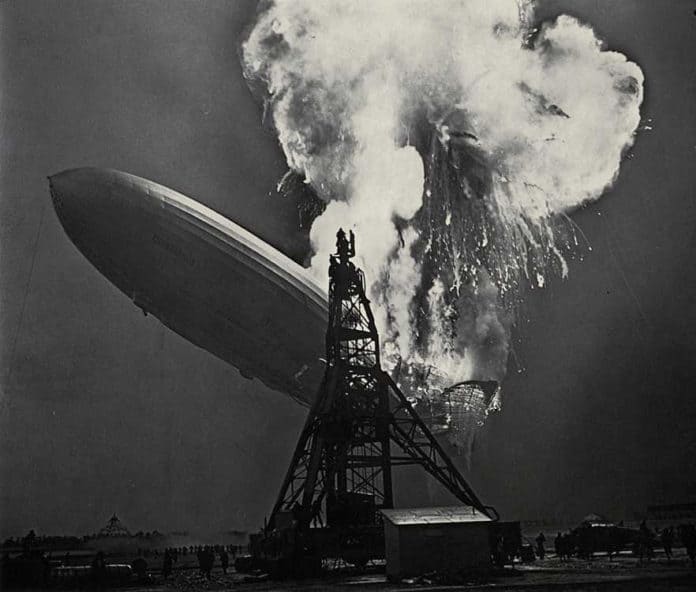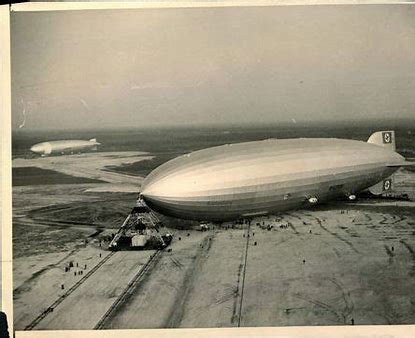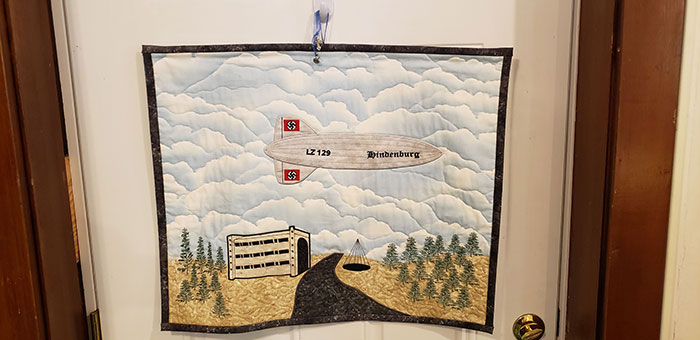
JOINT BASE MCGUIRE-DIX-LAKEHURST – The 85th anniversary of the Hindenburg airship disaster will be recalled this week during a ceremony held at the historic site of the famous tragedy.
Those who perished will be remembered during the annual Memorial Ceremony held on the grounds near the hanger where the great zeppelin was once housed.
The ceremony is held each year to recognize and honor those who died on May 6, 1937. The Hindenburg was the largest rigid airship ever constructed. There were 36 passengers and 61 officers, crew members, and trainees on board that day. Of those 97, 35 people and one member of the ground crew were killed during the disaster.
Keeping with tradition the ceremony at the base will begin at 6:45 p.m. on May 6 but is not open to the general public due to the base security.
The LZ 129 Hindenburg was a German commercial passenger carrying rigid airship, that was the lead vessel of the Hindenburg class and the longest class of flying machine and the largest airship by envelope volume.

After more than eight decades of research and scientific tests, the cause of the airship’s explosion remain the same as the conclusions reached by the original German and American accident investigation in 1937. The disaster is believed to have been caused by an electrostatic discharge (a spark) that ignited leaking hydrogen.
Hugo Eckener, a German airship pioneer who headed the firm that constructed the Hindenburg, had at one time speculated that the ship was the victim of sabotage. He would later withdraw that idea saying a stray spark more likely ignited the ship’s highly flammable hydrogen gas.
Hydrogen gas was used to contend with the National Munitions Control Board refusal to lift an export ban on alternative lighter than air gas that could provide sufficient lift.
Ernst A. Lehmann was the most senior officer on board although Max Pruss was the commanding officer of the last flight of the famed airship. Lehmann was there as an observer and sustained serious burns when the airship caught fire. He died a day later.

Among the passengers, staff, trainees and guests was a German shepherd named Ulla who was owned by vaudeville performer Joseph Spah. Spah survived but sadly, the dog did not. Most of those who did survive did so by jumping out of the window before the airship crashed into the ground. Many waited for it to be a split second from hitting the ground before they took the plunge.
Over half the people involved in the disaster survived. The actual death toll is logged as 36 since the crash also killed a crewman working on the ground. The Hindenburg will be remembered as the singular event that killed airship travel but there were other events that happened which also contributed to its demise. None of them stand out however, as much as the Hindenburg airship disaster which had stunning visual images taken and a notable radio announcer description at the scene as it happened.
The airship sailed for three days prior to the incident of around 7 p.m. on May 6, 1937. No one knows exactly how long it took for the ship to burn but eyewitness accounts of that time describe it to be around 30 to 40 seconds to burn off all the hydrogen and the skin of the airship.







